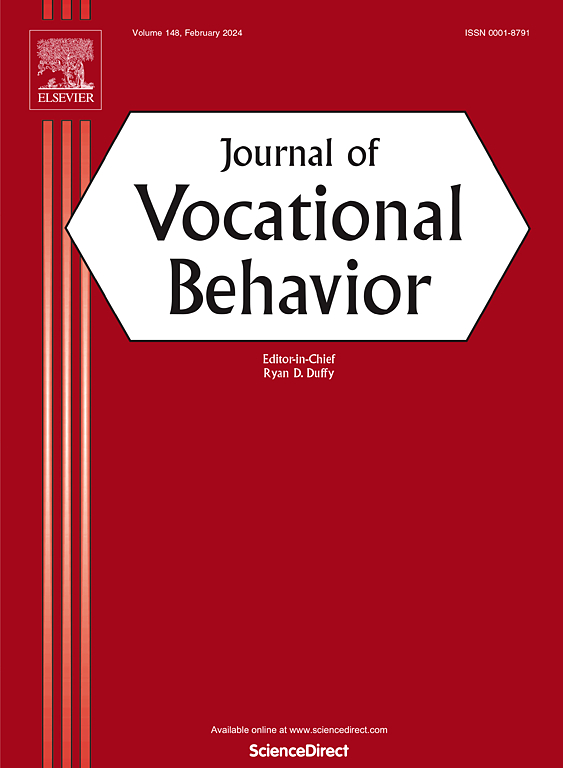High-performance work practices and job embeddedness: A comprehensive test
IF 5.2
1区 心理学
Q1 PSYCHOLOGY, APPLIED
引用次数: 0
Abstract
Using Conservation of Resources (COR) theory, we developed and tested a theoretical model linking high-performance work practices (HPWPs) to employees' quit intentions and job performance via their occupational, organizational, and job-role embeddedness. We also investigated how family embeddedness (FE) in the organization moderated those indirect relationships, addressing long-neglected family influence on HPWP outcomes. For a broad test of model generalizability, we combined multisource data (n = 1663) from four countries (China, Malaysia, Pakistan, and USA) and established that occupational, organizational, and job-role embeddedness are uniquely important mechanisms translating HPWP effects onto employees' quit intentions and job performance. Crucially, our findings challenge the prevalent view that HPWPs influence staying and performing in uniformly positive ways, as well as the nascent view that FE promotes staying. In fact, we find consistent evidence that HPWPs engender thoughts of leaving by increasing occupational embeddedness and diminish performance contributions by increasing organizational embeddedness. Furthermore, our test provides robust evidence that FE can operate as a “pull-to-leave” factor—either by strengthening positive indirect effects or weakening negative indirect effects of HPWPs on quit intentions.
高效工作实践与工作嵌入性:综合测试
利用资源保护(COR)理论,我们建立并测试了一个理论模型,该模型通过职业、组织和工作角色嵌入性,将高绩效工作实践(HPWP)与员工的辞职意愿和工作绩效联系起来。我们还研究了组织中的家庭嵌入性(FE)如何调节这些间接关系,从而解决长期以来被忽视的家庭对 HPWP 结果的影响问题。为了广泛检验模型的可推广性,我们结合了来自四个国家(中国、马来西亚、巴基斯坦和美国)的多源数据(n = 1663),确定了职业、组织和工作角色嵌入性是将 HPWP 的影响转化为员工辞职意愿和工作绩效的独特重要机制。至关重要的是,我们的研究结果对普遍认为 HPWP 会以一致的积极方式影响员工的留任和绩效的观点,以及新出现的认为 FE 会促进留任的观点提出了质疑。事实上,我们发现了一致的证据,即 HPWP 通过增加职业嵌入性来激发离职想法,并通过增加组织嵌入性来减少绩效贡献。此外,我们的测试还提供了有力的证据,证明FE可以作为一个 "拉动离职 "的因素发挥作用--通过加强HPWPs对离职意向的积极间接影响或削弱其消极间接影响。
本文章由计算机程序翻译,如有差异,请以英文原文为准。
求助全文
约1分钟内获得全文
求助全文
来源期刊

Journal of Vocational Behavior
PSYCHOLOGY, APPLIED-
CiteScore
13.10
自引率
5.40%
发文量
85
期刊介绍:
The Journal of Vocational Behavior publishes original empirical and theoretical articles offering unique insights into the realms of career choice, career development, and work adjustment across the lifespan. These contributions are not only valuable for academic exploration but also find applications in counseling and career development programs across diverse sectors such as colleges, universities, business, industry, government, and the military.
The primary focus of the journal centers on individual decision-making regarding work and careers, prioritizing investigations into personal career choices rather than organizational or employer-level variables. Example topics encompass a broad range, from initial career choices (e.g., choice of major, initial work or organization selection, organizational attraction) to the development of a career, work transitions, work-family management, and attitudes within the workplace (such as work commitment, multiple role management, and turnover).
 求助内容:
求助内容: 应助结果提醒方式:
应助结果提醒方式:


